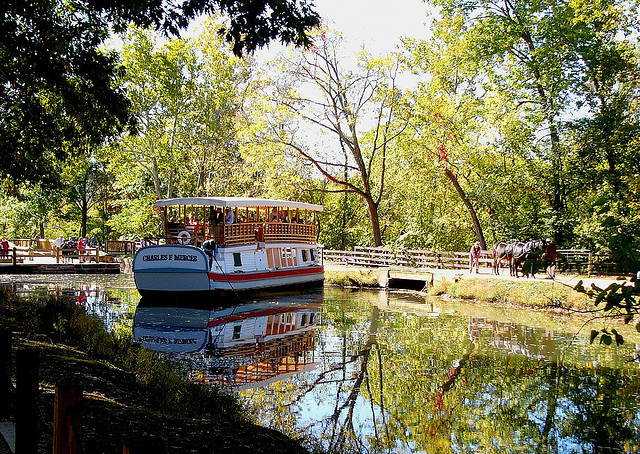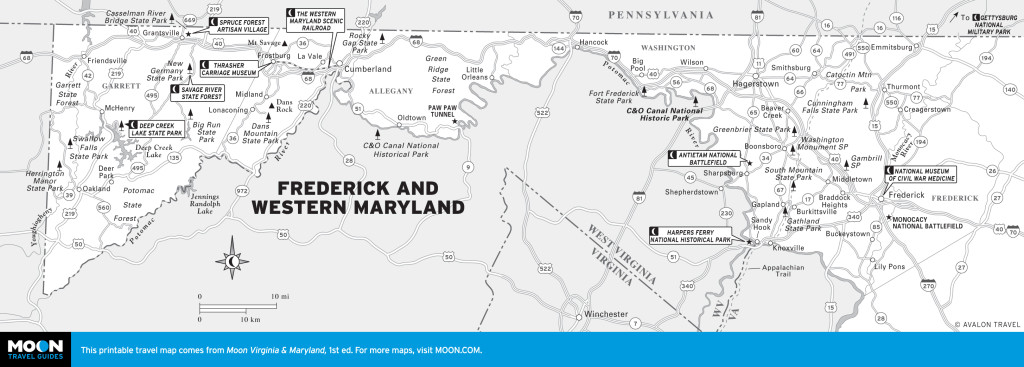
A mule-drawn barge at the Chesapeake & Ohio Canal Historical Park. Photo © Kathleen Tyler Conklin, licensed Creative Commons Attribution.
The Chesapeake & Ohio Canal National Historical Park (301/739-4200) is a 184.5-mile-long park covering 12,000 acres that runs parallel to the Potomac River. The park is a linear towpath (7-12 feet wide) along the old canal that extends from Cumberland, Maryland, to Georgetown in Washington DC.The original canal was in operation between 1831 and 1924 and served many communities along the Potomac River by providing a transport system for coal, lumber, and agricultural products. The canal boats were pulled by mules that walked alongside the canal on the towpath. At one time there could be as many as 2,000 mules working on the canal (operating in six-hour shifts).
The 605-foot elevation change and many stream crossings along the canal were accommodated by 74 locks, more than 150 culverts, and 11 aqueducts. There is also a 3,118-foot tunnel—the Paw Paw Tunnel—that the canal went through.
Cumberland was not planned as the western terminus of the canal, but when the canal reached Cumberland, the project ran out of money. The end of the C&O Canal is marked in Cumberland and a statue of a mule stands nearby at the Chesapeake & Ohio Canal National Historical Park.
The park is a beautiful and popular multistate trail for biking, running, walking, and boating. It passes near several popular towns such as Harpers Ferry, West Virginia, and Sharpsburg, Maryland. Two reproduced canal boats (pulled by mules) offer historical rides in the park (301/767-3714, Apr.-Oct. Wed.-Fri. 11am and 3pm, Sat.-Sun. 11am, 1:30pm, 3pm, $8).
Bike and boat rentals are available through two National Park Service partners at the downstream portion of the canal in Washington DC. The Boathouse at Fletchers Cove (milepost 3.2, 4940 Canal Rd. NW, Washington DC, 202/244-0461, kayak $11 per hour, canoe $14 per hour, rowboat $14 per hour, bike $8 per hour) and Thompson Boat Center (milepost 0, 2900 Virginia Ave. NW, Washington DC, 202/333-9543, kayak $15 per hour, canoe $14 per hour, bike $10 per hour).

Frederick and Western Maryland
Excerpted from the First Edition of Moon Virginia & Maryland.